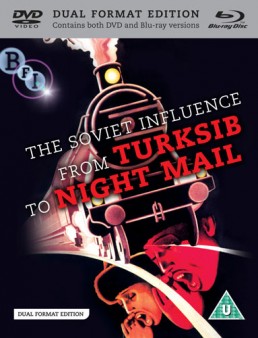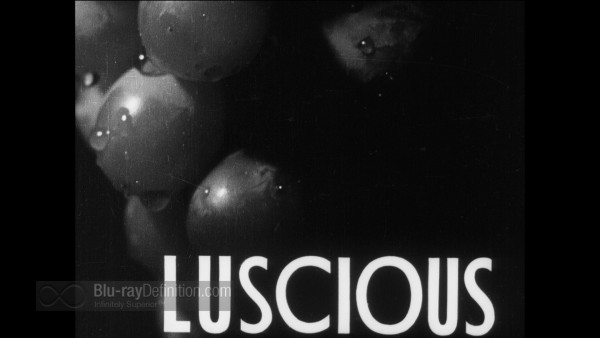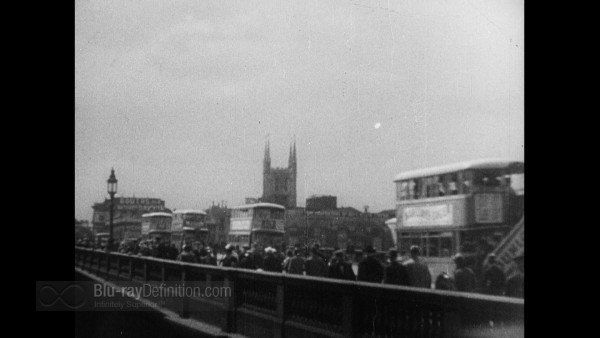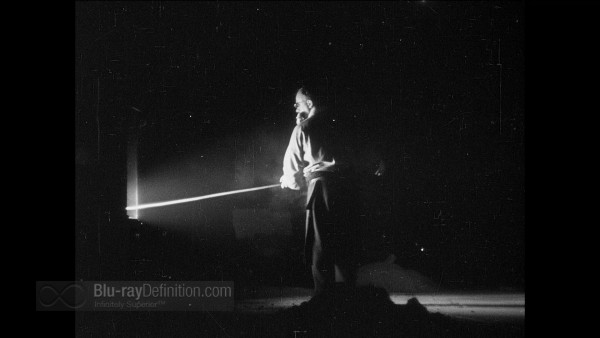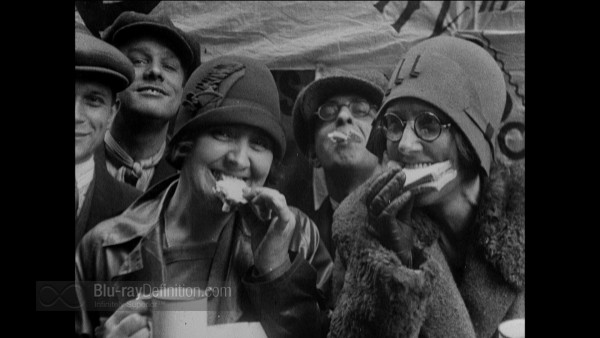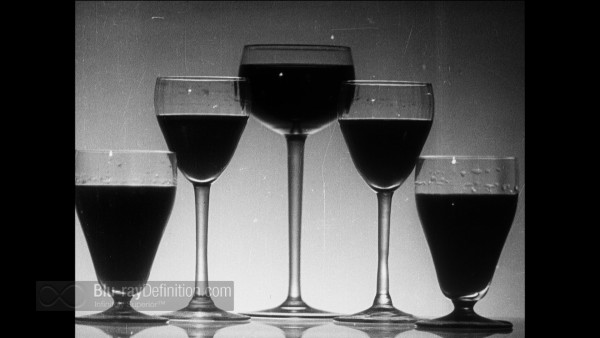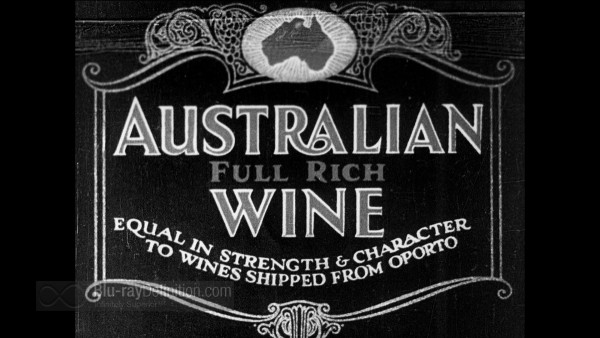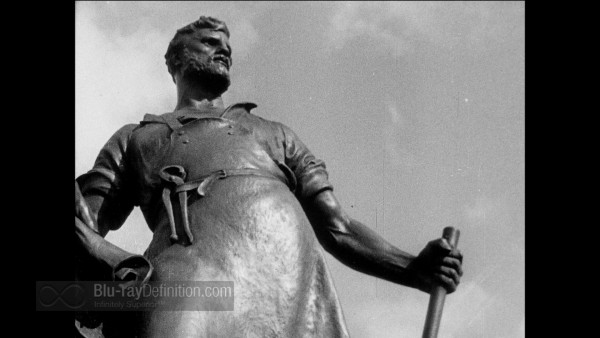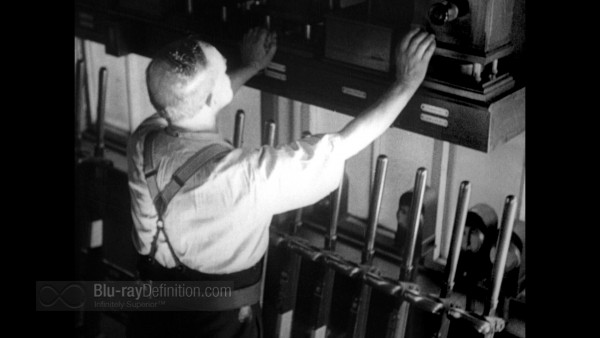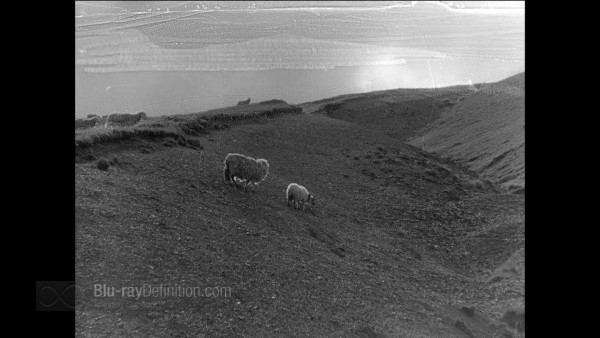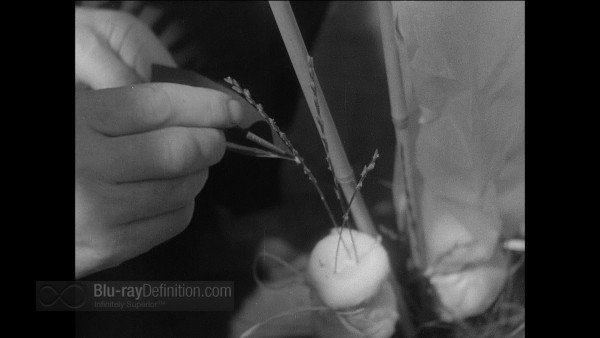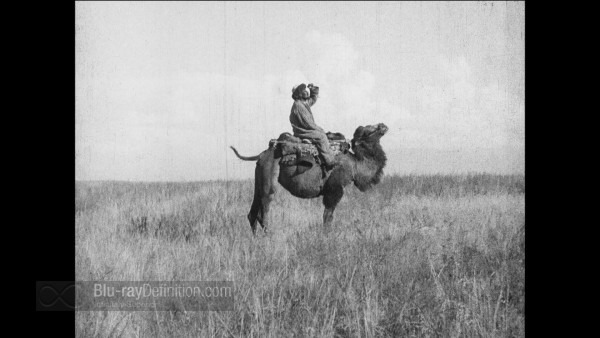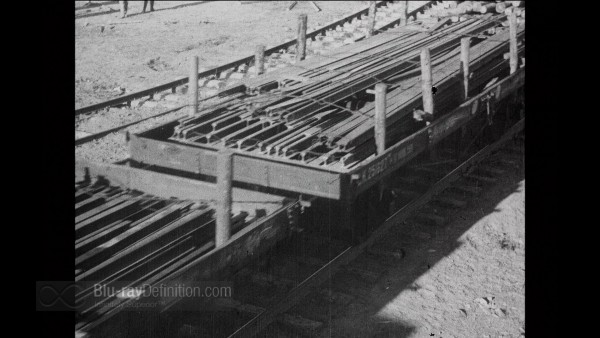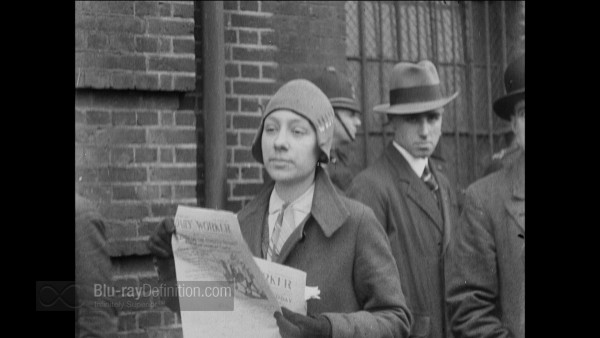- Aspect Ratio: 1.33:1
- Video Codec: AVC/MPEG-4
- Resolution: 1080p/24 (24Hz)
- Audio Codec: English LPCM 2.0 Stereo (48kHz/24-bit)
- Subtitles: N/A
- Region: ABC (Region-Free)
- Classification: U
- Discs: 2 (1 x Blu-ray + 1 x DVD)
- Studio: BFI
- Run Time: 163 Mins.
- Blu-ray Release Date: September 19, 2011
- RRP: £19.99
[amazon-product region=”uk” tracking_id=”bluraydefinit-21″]B0051URX0Y[/amazon-product]
Shop for more Blu-ray titles at Amazon.co.uk
Shop for more Blu-ray titles at Amazon.com
Overall
[Rating:3.5/5]
The Films
[Rating:3.5/5]
Video Quality
[Rating:2.5/5]
Audio Quality
[Rating:4/5]
Supplemental Materials
[Rating:1.5/5]
Click thumbnails for high-resolution 1920X1080p screen captures
(Screen captures are lightly compressed with lossy JPEG thus are meant as a general representation of the content and do not fully reveal the capabilities of the Blu-ray format)
–
The Films
[Rating:3.5/5]
In 1930, documentary film pioneer John Grierson prepared a version of the Soviet documentary Turksib (1929, John Turin) that was shown to British audiences. That impressionistic documentary film and its visual montage style had a profound effect on British documentary filmmakers in the years to follow. This collection from the BFI, The Soviet Influence: From Turksib to Night Mail collects that influential film together with a few British documentary shorts from the 1930s that followed in its wake, which were heavily influenced by it.
Turksib itself, a silent film presented here with a newly commissioned score by Guy Bartell focuses on the problems faced by regional farmers in Turkestan and the creation of the Turkestan-Siberian railway. It is filled with impressionistic images of the land and its people juxtaposed with the inevitable juggernaut of Soviet industrial expansion. I’m not so certain that the new score is always in harmony, no pun intended, with the subject matter here. The electronic instrumentation and trance music seems rather anachronistic and jarring, really a bit out of place, if I may be redundant.
Accompanying Turksib is The Worker’s Topical News No.1, a newsreel which accompanied Turksib’s British premiere. It highlights a workers’ movement and unemployment demonstration and features a roaring new score by Neil Thomas. Also included is Australian Wine (Paul Rotha, 1931), a really sleek-looking promotional film for, well, Australian wines that heavily employs the use of Soviet montage techniques and also includes a new score from Neil Thomas. The Country Comes to Town (Basil Wright, 1931) is a “talkie” that highlights the reliance of British cities on the rural areas, following the countryside’s production of dairy products and eggs all the way back to the hustle and bustle of the big city. Shadow on the Mountains (Arthur Elton, 1932) is a classic English pastoral, with impressionistic views of the English countryside as it expounds the virtues of farming and shepherding. The newly commissioned score by Neil Thomas works here, but while watching this I really longed to hear something from Ralph Vaughn William, William Alwyn, or even the not-so-English Debussy. The Face of Britain (Paul Rotha, 1935) is another stopover on the road to never ending progress, as the implications of Britain’s need for energy are highlighted in this call for socialist planning for the benefit of society.
Finally, the much heralded Night Mail (Harry Watt, Basil Wright, 1936) closes out the collection. It is the culmination of the Soviet influence over British documentarians with all the techniques garnered through the years focused to pinpoint precision on a thoroughly British film. The documentary features music composed by the great Benjamin Britten and a poem by the equally great W.H. Auden and tells of a mail train traveling from London to Scotland, “This is the Night Mail crossing the border / Bringing the cheque and the postal order,” begins the film with Auden’s famous lines as the wheels of the train clickety-clack off on its journey.
Video Quality
[Rating:2.5/5]
There is inevitably a lot of of source damage still visible in these transfers, despite the best efforts of the BFI. Still, the films look authentic and haven’t been excessively tampered with in these new high definition AVC encodements, so what natural amount of detail there is behind the dirt and scratches still remains.
Audio Quality
[Rating:4/5]
Audio for the newly-commissioned and recorded scores on Turksib, The Workers’ Topical News No. 1, Australian Wine, and Shadow on the Mountains sounds absolutely marvelous in this LPCM 2.0 Stereo (48kHz/24-bit) recording. There is a wide stereo soundfield, deep low frequencies and easy sounding highs. Naturally, the older recordings have a big drop in sound quality, but are still good enough and rather clean considering their age.
Supplemental Materials
[Rating:1.5/5]
There aren’t any real supplements for this release outside of the excellent 36-page booklet , which features the writings of the filmmakers John Grierson, Basil Wright, Paul Rotha and others on the Soviet influence on British documentary filmmaking. Of course, a DVD is also included in this Dual-Format release.
The Definitive Word
Overall:
[Rating:3.5/5]
I honestly don’t know how much replay value any of these films will really have for anyone outside of hardcore cineastes and archivists and they certainly are not any sort of reference home theatre material, but I cannot deny their historic value and appeal. For that reason, I find them truly compelling as educational material.
Additional Screen Captures
–
[amazon-product region=”uk” tracking_id=”bluraydefinit-21″]B0051URX0Y[/amazon-product]
Shop for more Blu-ray titles at Amazon.co.uk
Shop for more Blu-ray titles at Amazon.com
Overall
[Rating:3.5/5]
The Films
[Rating:3.5/5]
Video Quality
[Rating:2.5/5]
Audio Quality
[Rating:4/5]
Supplemental Materials
[Rating:1.5/5]


